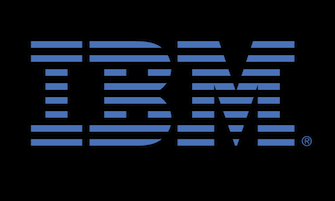 The International Business Machines Corporation (NYSE:IBM) of Armonk, NY, produces both computing hardware and software and also provides consulting services on a wide range of information technologies. In recent years, IBM has earned a great deal of notoriety from the development of the Watson cognitive system, which enables natural language interactions between humans and computing resources in multiple languages. At the beginning of July, IBM announced a series of new cognitive services available through Watson, including text-to-speech, speech-to-text and language translation services. At the MD Anderson Cancer Center in the University of Texas system, Watson is currently being used to analyze treatment histories, genetic data and databases of medical knowledge to develop personalized treatments for cancer patients. The company has a global presence in the Big Data industry and recently announced the opening of a new data center in Montpelier, France, that will provide additional computing support for app developers in that region of Europe.
The International Business Machines Corporation (NYSE:IBM) of Armonk, NY, produces both computing hardware and software and also provides consulting services on a wide range of information technologies. In recent years, IBM has earned a great deal of notoriety from the development of the Watson cognitive system, which enables natural language interactions between humans and computing resources in multiple languages. At the beginning of July, IBM announced a series of new cognitive services available through Watson, including text-to-speech, speech-to-text and language translation services. At the MD Anderson Cancer Center in the University of Texas system, Watson is currently being used to analyze treatment histories, genetic data and databases of medical knowledge to develop personalized treatments for cancer patients. The company has a global presence in the Big Data industry and recently announced the opening of a new data center in Montpelier, France, that will provide additional computing support for app developers in that region of Europe.
 IBM is in a class of its own when it comes to assessing corporate patenting activities. This company blew well past second-place Samsung Electronics (KRX:005930) with 7,534 patents issued by the U.S. Patent and Trademark Office in 2014, representing an average of 20 inventions per day and besting Samsung by greater than 2,500 U.S. patents. Both companies have been keeping up a steady patenting pace through 2015, greatly outpacing tech rivals such as LG, Google, Sony and Microsoft. Recently, IBM transferred as many as 16,000 patents and patent applications to semiconductor fabricator GlobalFoundries as part of the latter’s acquisition of IBM’s Microelectronics semiconductor manufacturing business. In the second quarter of 2015 alone, IBM earned 1,999 U.S. patents according to the patent analysis tools available through Innography. Interestingly, the text cluster posted here is showing us a great deal of activity in semiconductor innovation, indicating that the tech giant may not be done with that sector of hardware just yet.
IBM is in a class of its own when it comes to assessing corporate patenting activities. This company blew well past second-place Samsung Electronics (KRX:005930) with 7,534 patents issued by the U.S. Patent and Trademark Office in 2014, representing an average of 20 inventions per day and besting Samsung by greater than 2,500 U.S. patents. Both companies have been keeping up a steady patenting pace through 2015, greatly outpacing tech rivals such as LG, Google, Sony and Microsoft. Recently, IBM transferred as many as 16,000 patents and patent applications to semiconductor fabricator GlobalFoundries as part of the latter’s acquisition of IBM’s Microelectronics semiconductor manufacturing business. In the second quarter of 2015 alone, IBM earned 1,999 U.S. patents according to the patent analysis tools available through Innography. Interestingly, the text cluster posted here is showing us a great deal of activity in semiconductor innovation, indicating that the tech giant may not be done with that sector of hardware just yet.
Other business moves indicating a corporate refocus on software solutions has caused the company to stumble in some sectors in recent months. A ranking of players in the technical server market for this year’s first quarter showed that IBM slipped from second to fourth place, but that was expected after the sale of IBM’s backward-compatible x86 server business to Lenovo Group Limited (HKG:0992). The recent data center opening in France and other global activities in the $125 billion Big Data market, however, is evidence that IBM has a strategic focus on its software business. We’ve covered the profitability of IBM’s multi-billion dollar cloud computing business before here on IPWatchdog.
[Companies-1]
Issued Patents: From Software Engineering Systems to Renewable Energy Power Grids
More effective development tools for businesses which need to improve their ability to adapt information technology solutions for their own needs are at the center of U.S. Patent No. 9063711, titled Software Engineering System and Method for Self-Adaptive Dynamic Software Components. The method of engineering a software component claimed here involves the automatic and dynamic adaptation of the software component for receiving external conditions which are not dictated by the activation of preprogrammed code within the software component. The method also involves the provision of externally modifiable adapters and the creation of a control interface which gives organizations more flexibility in developing their own IT services.
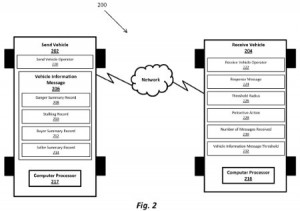 Automotive innovation has been a recurring theme of this year’s coverage on IPWatchdog so of course we were intrigued to see IBM receive U.S. Patent No. 9068854, issued under the title Peer-to-Peer Vehicle Communicator. This patent protects a computer-implemented method of communicating information between vehicle operators such as a message including stalking information which includes the identification of an order of protection for the vehicle receiving the message. As a result of receiving the message, the receiving vehicle can initiate a protective action, such as generating an alternative driving route. The system would be capable of alerting drivers to a dangerous stalker or general vehicle hazards like a door left ajar.
Automotive innovation has been a recurring theme of this year’s coverage on IPWatchdog so of course we were intrigued to see IBM receive U.S. Patent No. 9068854, issued under the title Peer-to-Peer Vehicle Communicator. This patent protects a computer-implemented method of communicating information between vehicle operators such as a message including stalking information which includes the identification of an order of protection for the vehicle receiving the message. As a result of receiving the message, the receiving vehicle can initiate a protective action, such as generating an alternative driving route. The system would be capable of alerting drivers to a dangerous stalker or general vehicle hazards like a door left ajar.
Even with IBM’s pullback from hardware development it is still responsible for some very intriguing developments in the field, as is reflected in U.S. Patent No. 9064743, which is titled Flexible, Stretchable Electronic Devices. The structure disclosed by this patent includes a semiconductor substrate with an electrically insulating layer, a circuitry layer with two CMOS regions adjoining the electrically insulating layer, a separator layer isolating the CMOS regions and an electrical connector layer connecting the two regions across the separator layer. This patent represents the development of a new method of fabricating complementary metal oxide semiconductor (CMOS) circuits onto a substrate to develop devices which can conform to non-planar surfaces without sacrificing any mechanical characteristics, like fracture toughness.
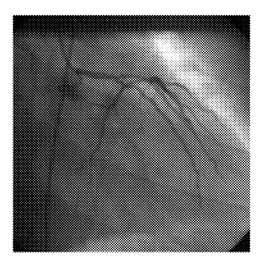 IBM is involved with the development of medical technologies for fields other than oncology, as is evidenced by the issue of U.S. Patent No. 9064306, which is titled Bidirectional Blood Vessel Segmentation. The method for segmenting blood vessels protected here involves receiving an angiogram frame, processing the angiogram frame by applying a Butterworth bandpass filter to suppress high and low frequency background noise, performing both bottom-up filtering and top-down segmentation of the angiogram frame and repeating that process until the results of the top-down segmentation from consecutive iterations equals or exceeds a threshold value. This process is useful for the analysis of angiogram images captured through cardiac catheterization as it can reduce the amount of feedback noise in those images.
IBM is involved with the development of medical technologies for fields other than oncology, as is evidenced by the issue of U.S. Patent No. 9064306, which is titled Bidirectional Blood Vessel Segmentation. The method for segmenting blood vessels protected here involves receiving an angiogram frame, processing the angiogram frame by applying a Butterworth bandpass filter to suppress high and low frequency background noise, performing both bottom-up filtering and top-down segmentation of the angiogram frame and repeating that process until the results of the top-down segmentation from consecutive iterations equals or exceeds a threshold value. This process is useful for the analysis of angiogram images captured through cardiac catheterization as it can reduce the amount of feedback noise in those images.
An enhanced system for developing presentations for business or other organizational applications is described within U.S. Patent No. 9069772, titled Smart Slide Creation and Presentation. The computer-implemented method to create a presentation disclosed here involves representing visual elements as depictions in a visual model with a view layer, a content model and a mapping model and operating the visual model to perform computation that automatically propagates any change made to a visual item across every sheet of a presentation so that each instance of the item is automatically changed. This innovation was pursued to make it easier to maintain a uniform appearance in presentations.
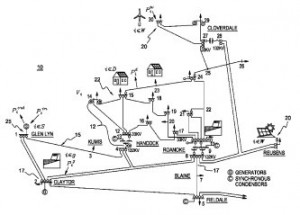 We were also interested in a system developed by IBM to respond to uncertainties in electrical grids utilizing renewable resources, discussed within U.S. Patent No. 9058444, titled Planning Economic Energy Dispatch in Electric Grid Under Uncertainty. The patent protects a method for determining a generator dispatch plan for a power grid which involves receiving data modeling the power flow over the nodes of a power grid, receiving a set of forecast scenarios which model uncertainties in renewable energy output and solving a model of an economic dispatch problem to obtain power dispatch levels for generators. This invention aims to establish a system which helps large-scale power grids incorporate non-dispatchable power from wind and solar and quickly dispatchable power from hydroelectric and minor turbine applications.
We were also interested in a system developed by IBM to respond to uncertainties in electrical grids utilizing renewable resources, discussed within U.S. Patent No. 9058444, titled Planning Economic Energy Dispatch in Electric Grid Under Uncertainty. The patent protects a method for determining a generator dispatch plan for a power grid which involves receiving data modeling the power flow over the nodes of a power grid, receiving a set of forecast scenarios which model uncertainties in renewable energy output and solving a model of an economic dispatch problem to obtain power dispatch levels for generators. This invention aims to establish a system which helps large-scale power grids incorporate non-dispatchable power from wind and solar and quickly dispatchable power from hydroelectric and minor turbine applications.
[Companies-3]
Patent Applications of Note: From Medical Systems to Mobile Device Loss Prevention
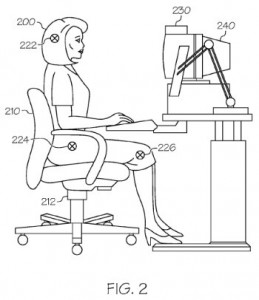 More medical innovations were on display when we perused the most recent IBM innovations reflected in patent applications published in recent weeks by the USPTO. The analysis of long-term health risks for an individual based upon their posture is the focus of U.S. Patent Application No. 20150178461, titled Group Posture Health Risk Management. The patent application would protect a method of receiving a seated signal from a device monitoring the posture of a subject, accumulating the seated signal over a duration of time and generating a health risk factor based on the accumulated data. This system is designed to monitor the way a person situates him or herself while seated for long periods of time in order to reduce the risk of mortality associated with prolonged sitting. A hearing aid product which aims to be more responsive to the needs posed by a wearer’s environment is featured within U.S. Patent Application No. 20150181356, which is titled Smart Hearing Aid. It would protect a computer-usable program product for use in controlling a hearing aid using an adjustable policy by receiving an input signal, receiving an indication signal from a user identifying the input signal, receiving an adjustment to the hearing aid with the indication signal and storing the input signal with a corresponding adjustment policy. This system allows a hearing aid to be more responsive to a user’s environment and better address noise issues which are endemic to either rural or urban settings.
More medical innovations were on display when we perused the most recent IBM innovations reflected in patent applications published in recent weeks by the USPTO. The analysis of long-term health risks for an individual based upon their posture is the focus of U.S. Patent Application No. 20150178461, titled Group Posture Health Risk Management. The patent application would protect a method of receiving a seated signal from a device monitoring the posture of a subject, accumulating the seated signal over a duration of time and generating a health risk factor based on the accumulated data. This system is designed to monitor the way a person situates him or herself while seated for long periods of time in order to reduce the risk of mortality associated with prolonged sitting. A hearing aid product which aims to be more responsive to the needs posed by a wearer’s environment is featured within U.S. Patent Application No. 20150181356, which is titled Smart Hearing Aid. It would protect a computer-usable program product for use in controlling a hearing aid using an adjustable policy by receiving an input signal, receiving an indication signal from a user identifying the input signal, receiving an adjustment to the hearing aid with the indication signal and storing the input signal with a corresponding adjustment policy. This system allows a hearing aid to be more responsive to a user’s environment and better address noise issues which are endemic to either rural or urban settings.
The health of computer networks and computing equipment is also at the forefront of IBM’s research and development goals to judge by another pair of patent applications which caught our eyes. The health of flash memory storage systems is the main concern of the technology that would be protected by U.S. Patent Application No. 20150178191, titled Collaborative Health Management in a Storage System. The method of collaborative management in a non-volatile hierarchical storage system with multiple controllers disclosed here involves a first controller receiving reports of the health of multiple storage units from other controllers, maintenance of a health record database and the modification of logical-to-physical address mappings in response to a health event so that data having greater access heat can be mapped to relatively healthier storage units. These health techniques are designed to enhance wear leveling techniques to increase the service life of a flash memory array. Assessing the degradation over time of question/answer computing systems much like Watson is detailed within U.S. Patent Application No. 20150169395, entitled Monitoring the Health of a Question/Answer Computing System. The method of monitoring a QA system’s health claimed here involves periodically submitting a plurality of static questions to the QA system which correspond to previously established verified answers, receiving a plurality of responses to the static questions from the QA system, monitoring a performance of the QA system based on the responses and notifying a QA system user of an identified problem. This method is designed to determine any degradation in answer response time and result accuracy that may occur over the course of time due to hardware issues or a large corpus requiring machine retraining.
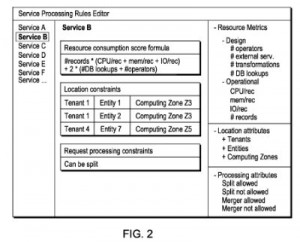 A technology aiming to promote a high quality of service for cloud services offered by IBM is the focus of U.S. Patent Application No. 20150178359, which is titled Intelligently Provisioning Cloud Information Services. The patent application would protect a computer program product for intelligently provisioning cloud services by receiving a service request from an entity, receiving service processing rules involving location constraints, determining a target computing zone based on location constraints, sending the service request to the target computing zone, computing a score for resources required by the service request and determining whether a merger or split of computing resources is needed. This technology is designed to reduce processing time in cloud computing systems when moving large stores of data from one cloud service provider location to another.
A technology aiming to promote a high quality of service for cloud services offered by IBM is the focus of U.S. Patent Application No. 20150178359, which is titled Intelligently Provisioning Cloud Information Services. The patent application would protect a computer program product for intelligently provisioning cloud services by receiving a service request from an entity, receiving service processing rules involving location constraints, determining a target computing zone based on location constraints, sending the service request to the target computing zone, computing a score for resources required by the service request and determining whether a merger or split of computing resources is needed. This technology is designed to reduce processing time in cloud computing systems when moving large stores of data from one cloud service provider location to another.
Lost or stolen mobile devices is a major concern for owners of expensive electronic devices storing sensitive personal information so most of us should be encouraged by the invention detailed within U.S. Patent Application No. 20150179046, titled Mobile Device Loss Prevention. This patent application claims a method for a mobile device to prevent loss by monitoring the device’s environmental parameters, storing this data to form a history of environmental parameters, applying statistical analysis to a current set of environmental parameters to determine the possibility that a device is lost and performing an action to prevent loss of the mobile device. This system can provide information to a device owner through an e-mail message or other means with information about the whereabouts of the missing device so that it can be obtained.
Finally, we were intrigued to note an invention pursued by IBM which is focused on addressing concerns over providing clean water to a populace. U.S. Patent Application No. 20150166371, which is titled Desalination System and Method for Desalination, would protect a desalination system with a steam raising device including a liquid section separated from a steam section by a membrane system, a membrane distillation device including separate steam sections and a heat exchange device with multiple liquid sections. The heat exchanging nature of this desalination system enables a much more efficient thermal energy consumption for the creation of potable drinking water from brackish water or seawater.

![[IPWatchdog Logo]](https://ipwatchdog.com/wp-content/themes/IPWatchdog%20-%202023/assets/images/temp/logo-small@2x.png)

![[Advertisement]](https://ipwatchdog.com/wp-content/uploads/2024/04/Patent-Litigation-Masters-2024-sidebar-early-bird-ends-Apr-21-last-chance-700x500-1.jpg)

![[Advertisement]](https://ipwatchdog.com/wp-content/uploads/2021/12/WEBINAR-336-x-280-px.png)
![[Advertisement]](https://ipwatchdog.com/wp-content/uploads/2021/12/2021-Patent-Practice-on-Demand-recorded-Feb-2021-336-x-280.jpg)
![[Advertisement]](https://ipwatchdog.com/wp-content/uploads/2021/12/Ad-4-The-Invent-Patent-System™.png)







Join the Discussion
No comments yet.